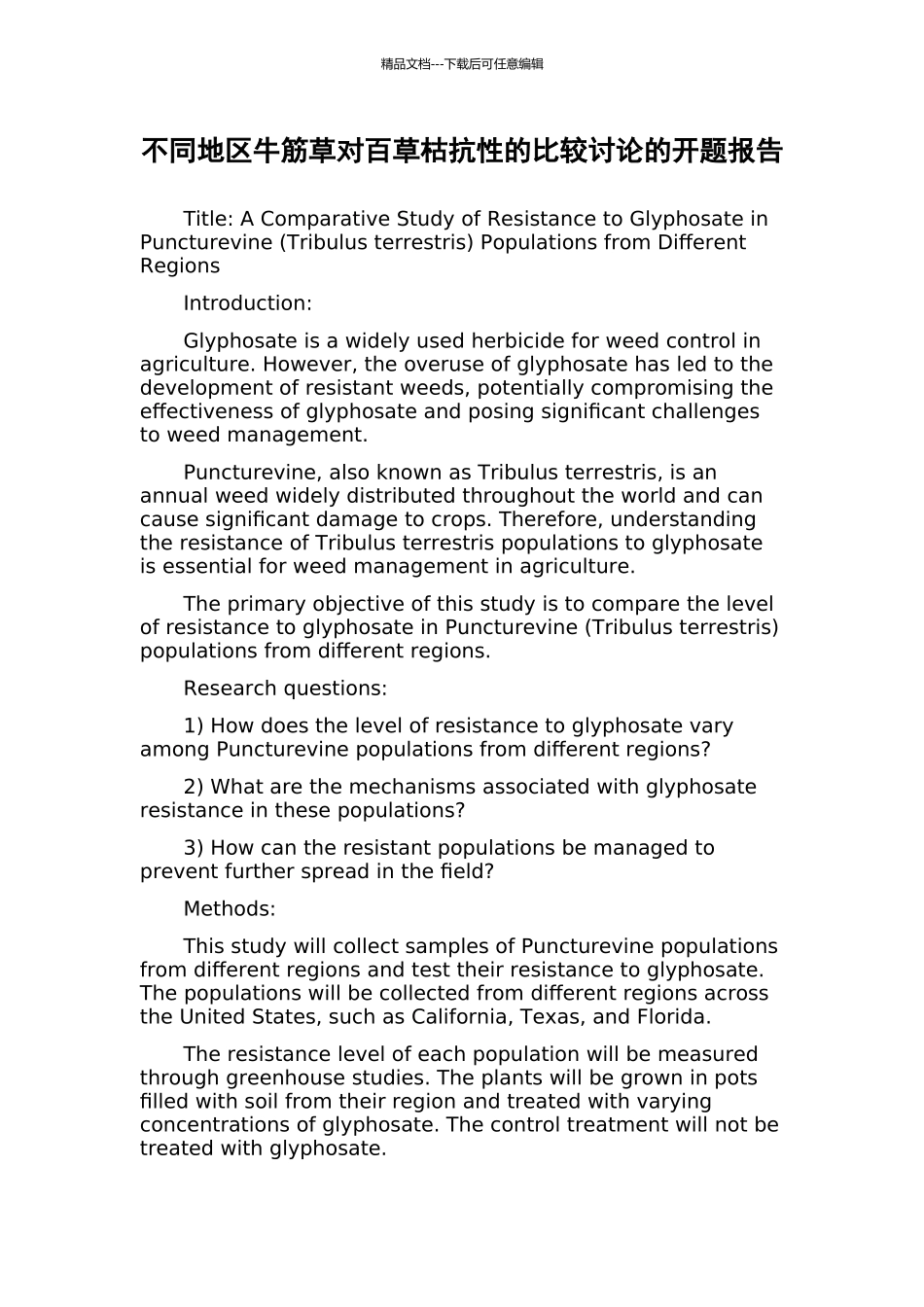精品文档---下载后可任意编辑不同地区牛筋草对百草枯抗性的比较讨论的开题报告Title: A Comparative Study of Resistance to Glyphosate in Puncturevine (Tribulus terrestris) Populations from Different RegionsIntroduction:Glyphosate is a widely used herbicide for weed control in agriculture. However, the overuse of glyphosate has led to the development of resistant weeds, potentially compromising the effectiveness of glyphosate and posing significant challenges to weed management.Puncturevine, also known as Tribulus terrestris, is an annual weed widely distributed throughout the world and can cause significant damage to crops. Therefore, understanding the resistance of Tribulus terrestris populations to glyphosate is essential for weed management in agriculture.The primary objective of this study is to compare the level of resistance to glyphosate in Puncturevine (Tribulus terrestris) populations from different regions.Research questions:1) How does the level of resistance to glyphosate vary among Puncturevine populations from different regions?2) What are the mechanisms associated with glyphosate resistance in these populations?3) How can the resistant populations be managed to prevent further spread in the field?Methods:This study will collect samples of Puncturevine populations from different regions and test their resistance to glyphosate. The populations will be collected from different regions across the United States, such as California, Texas, and Florida.The resistance level of each population will be measured through greenhouse studies. The plants will be grown in pots filled with soil from their region and treated with varying concentrations of glyphosate. The control treatment will not be treated with glyphosate.精品文档---下载后可任意编辑The experiments will be conducted in a randomized block design with ten replications for each treatment. Data on plant height, fresh and dry weights, and survival will be recorded two weeks post-treatment.Results:It is anticipated that the results will indicate that glyphosate resistance is present in some of the Puncturevine populations from different regions, while others will not exhibit any resistance. The molecular mechanisms associated with glyphosate resistance will also be studied through genomic sequencing.Conclusion:The findings from this study will provide valuable insights into the development of glyphosate resistance in Puncturevine populations from different regions. This knowledge will guide appropriate herbicide stewardship practices, diversity of weed management strategies, and optimization of sustainable management programs for the effective control of glyphosate-resistant weeds.

